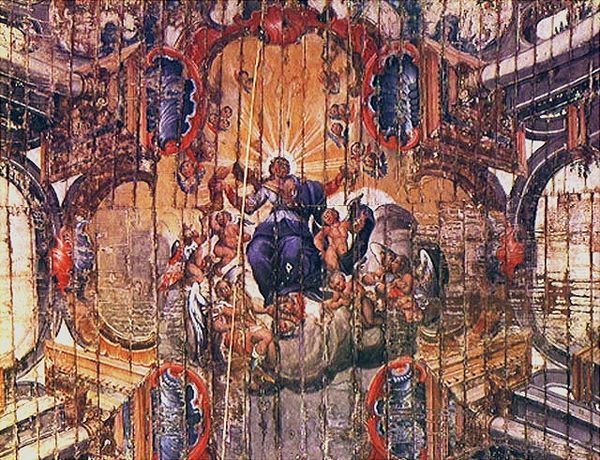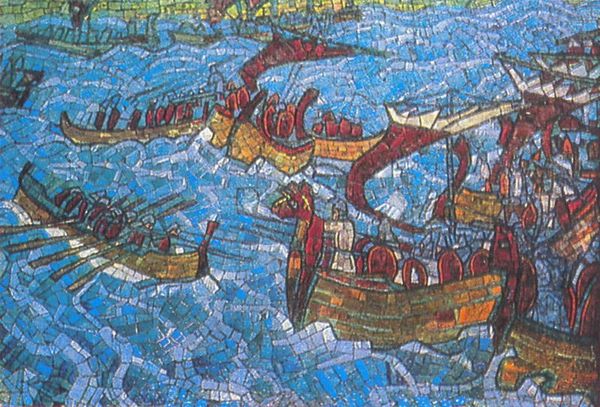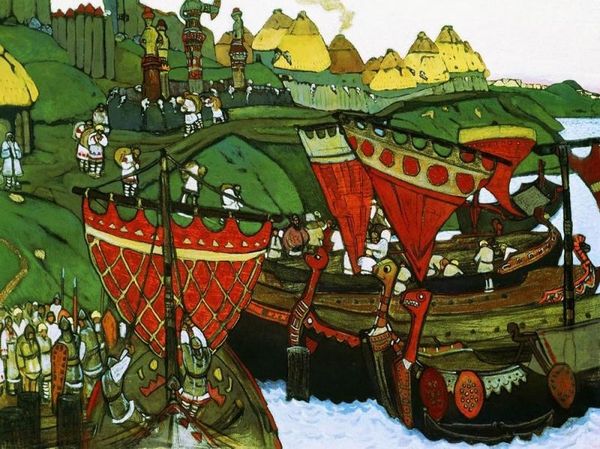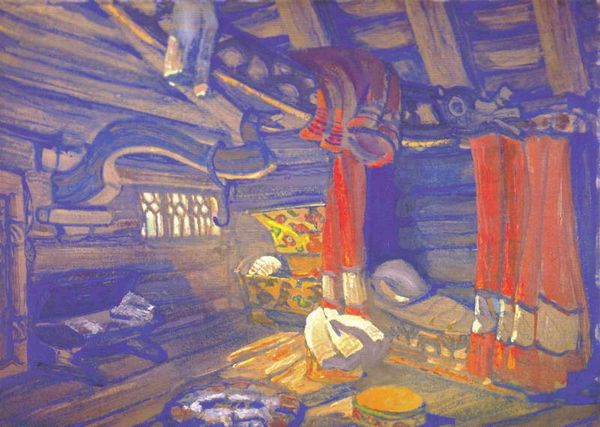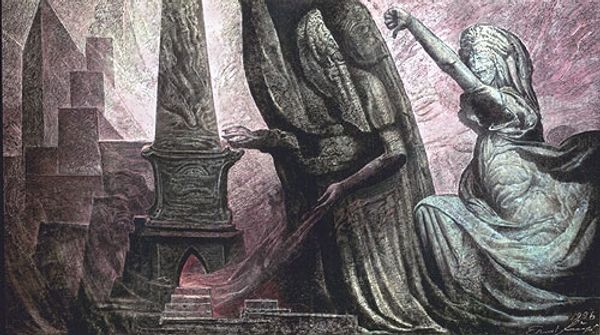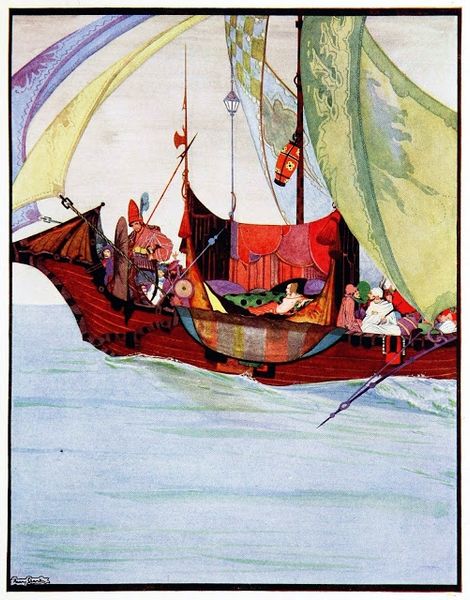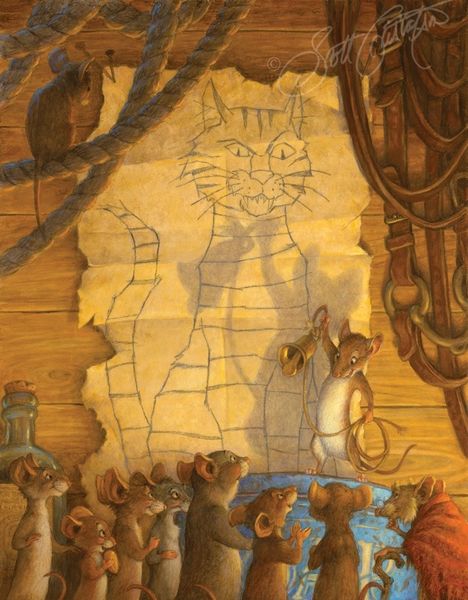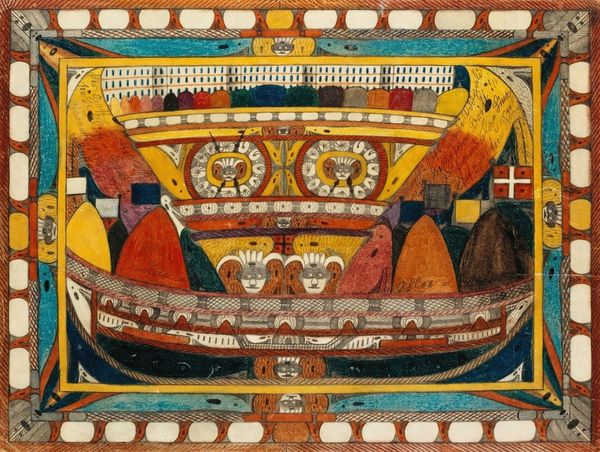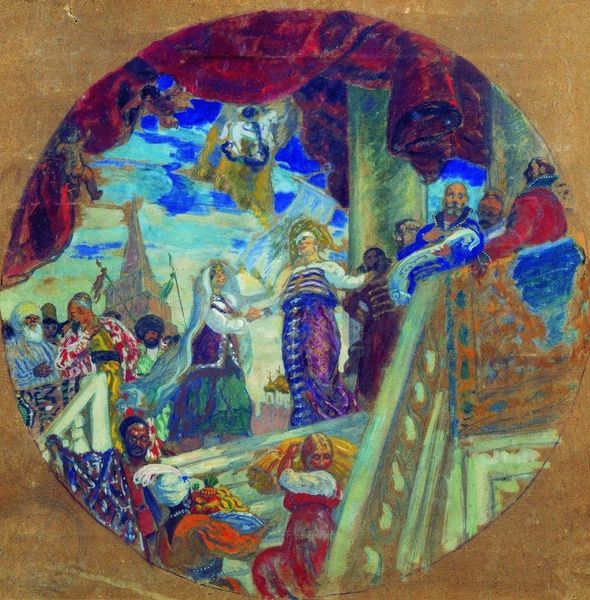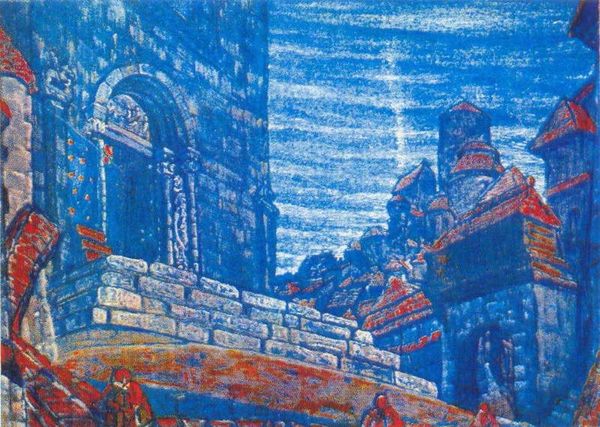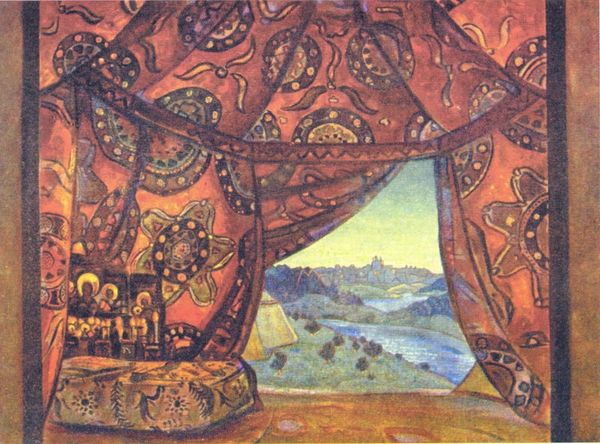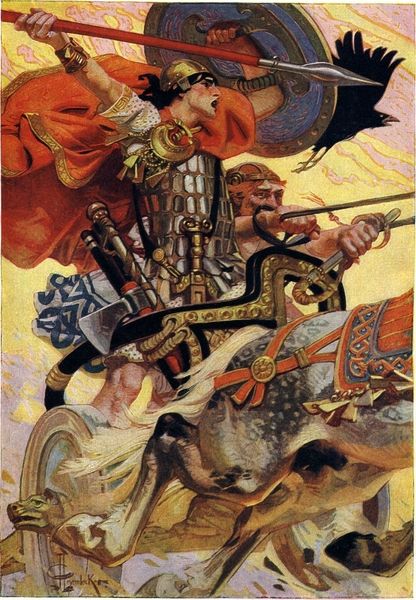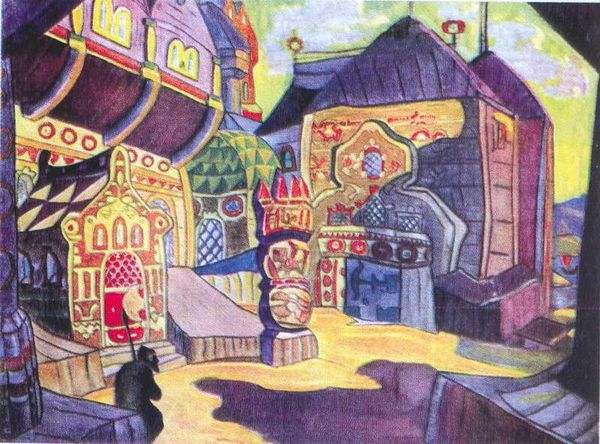
tempera, painting, mural
#
tempera
#
painting
#
asian-art
#
landscape
#
figuration
#
symbolism
#
history-painting
#
decorative-art
#
mural
Copyright: Public domain
Editor: This is Nicholas Roerich's "Study of scene design for 'Tristan und Isolde'" from 1914, done with tempera. I’m immediately struck by the use of decorative elements and the kind of dreamlike quality. What do you see in this piece? Curator: It sings to me of cultural memory. Note how Roerich, immersed in the burgeoning Symbolist movement, uses the Tristan and Isolde legend, not merely as a story, but as a vessel. A vessel carrying ancient longings, recurring archetypes. Editor: Archetypes? Curator: Yes. Consider the setting he envisions. The ship, a space of passage, of transformation. The tented structure suggests both safety and confinement. These aren't just set pieces; they're laden with symbolic weight, reflecting psychological spaces. Notice the animal motifs along the tent – echoes of pre-Christian mythologies mingling with Wagnerian romanticism. Do they trigger anything for you? Editor: It's interesting you say that, they seem somewhat detached and self-contained despite the heavy themes in the foreground. Almost… totemic? Curator: Precisely! The layering is quite deliberate. Roerich uses this collision of symbols—Norse, Celtic, Wagnerian—to tap into a deeper, collective unconscious. The image then serves as an active vessel, allowing us to remember aspects about ourselves and shared culture. Editor: That's fascinating. So, it's not just about the opera, but about something much older and more deeply rooted. Curator: Indeed! It speaks to a timeless, cross-cultural narrative that Wagner merely reinterpreted. Roerich unveils the source code. The images endure precisely because of that underlying continuity. Editor: I’ll definitely look at it differently now. I hadn’t considered the depth of the symbols. Curator: And that's the point, isn’t it? Art invites us to excavate.
Comments
No comments
Be the first to comment and join the conversation on the ultimate creative platform.
